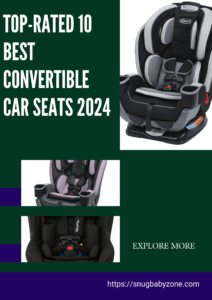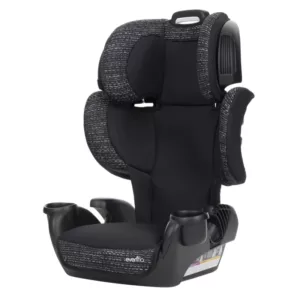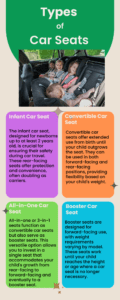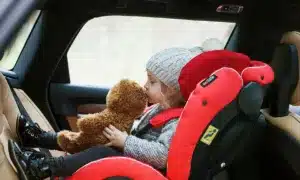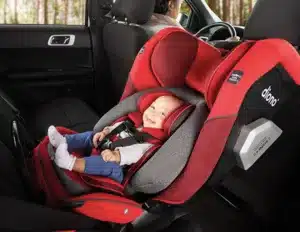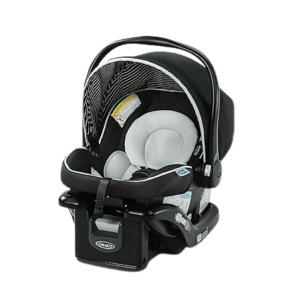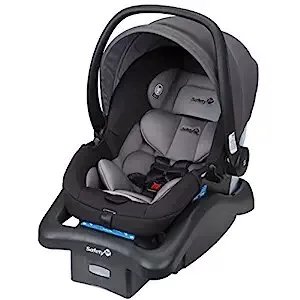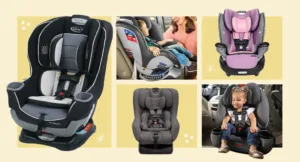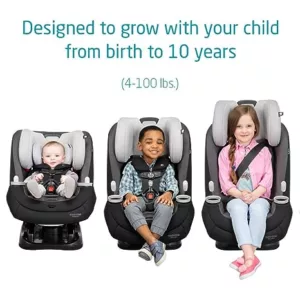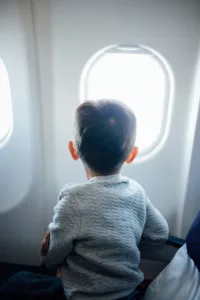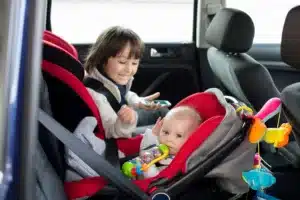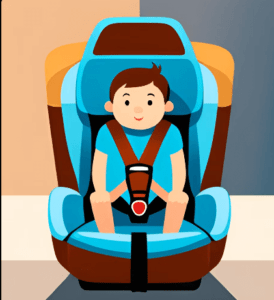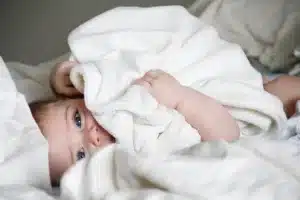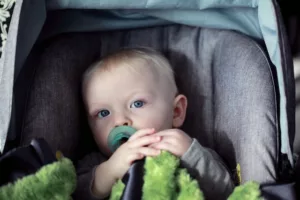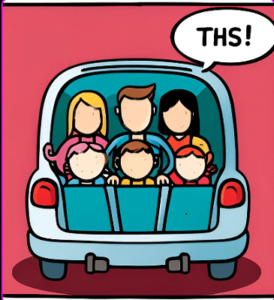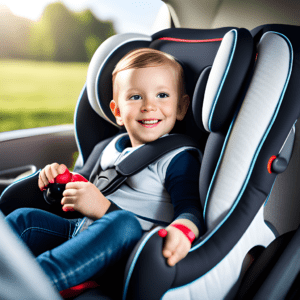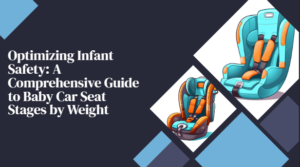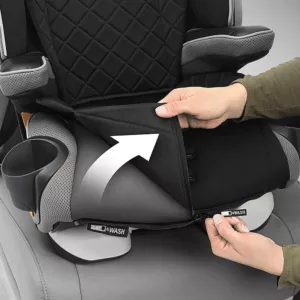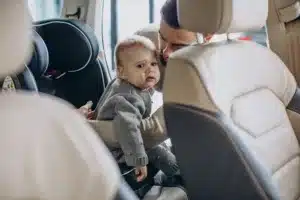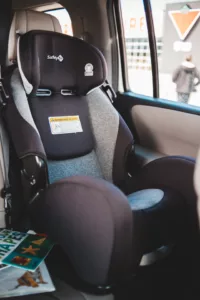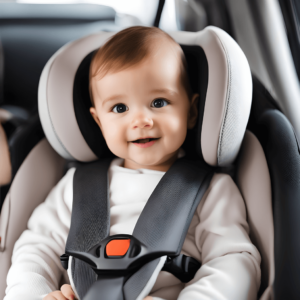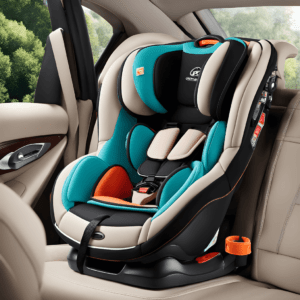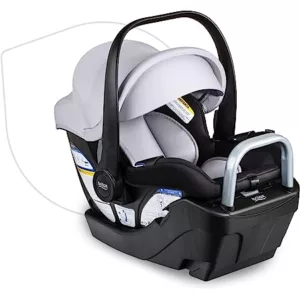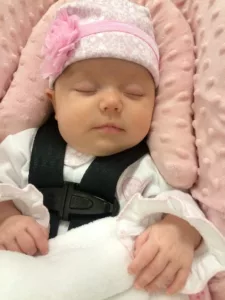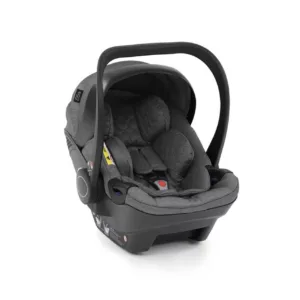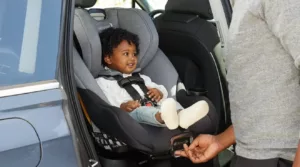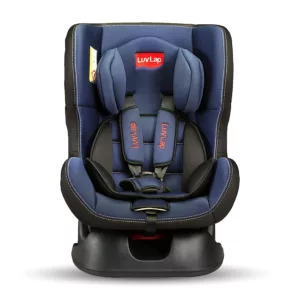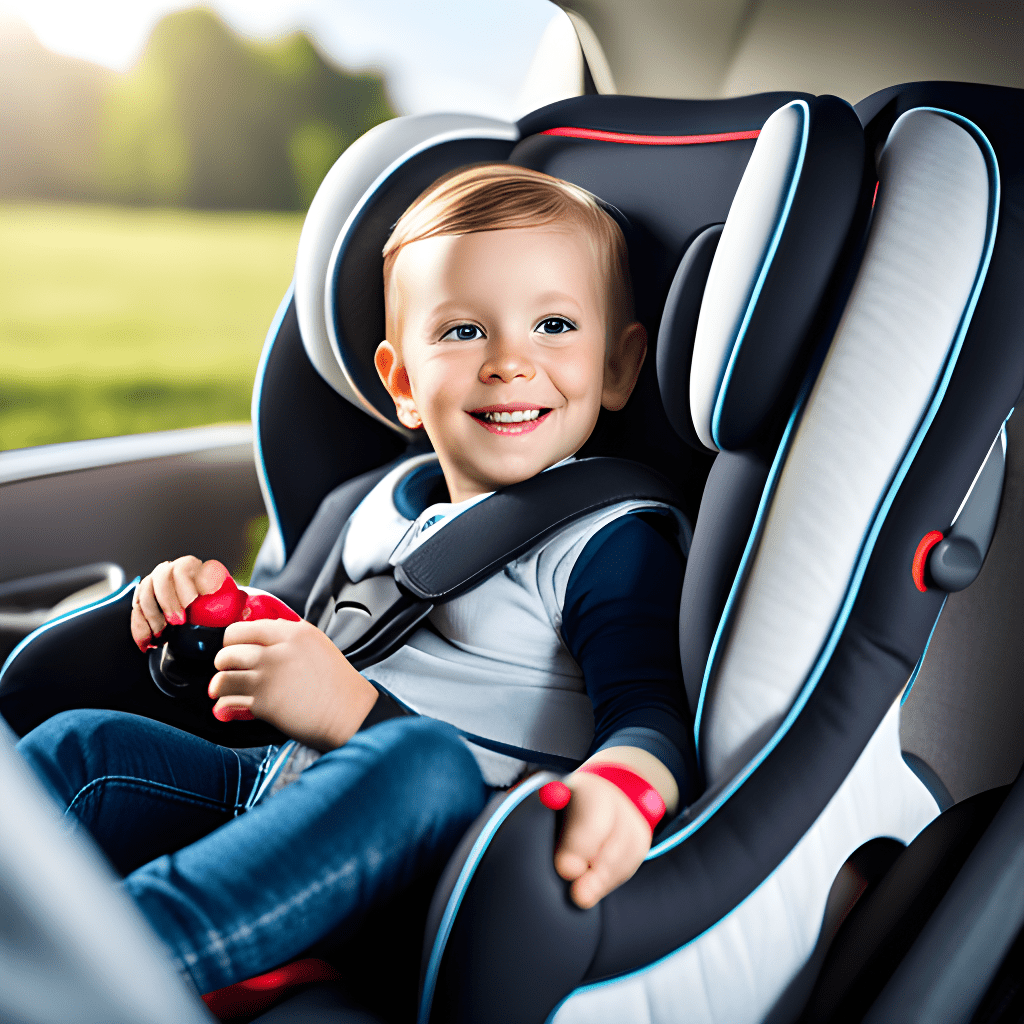
Are Second-Hand Baby Car Seats Safe? Learn the crucial factors and tips to ensure your child’s safety in used car seats.
Thank you for reading this post, don't forget to subscribe!While many parents opt for brand-new car seats, others are drawn to the cost savings and environmental benefits offered by second-hand baby car seats. However, it’s crucial to address the question on every parent’s mind: Are second-hand baby car seats safe? In this extensive guide, we will delve into the topic, exploring the benefits, risks, and guidelines associated with second-hand baby car seats.
Statistics reveal that a significant portion of parents consider purchasing second-hand baby car seats. According to recent studies, approximately 40% of parents have either bought or considered buying a second-hand car seat. This indicates the relevance and importance of discussing the safety aspects associated with second-hand options.
Table of Contents
ToggleWhat are Second-Hand Baby Car Seats? Pre-Owned Infant Car Seats
Second-hand baby car seats refer to previously owned car seats used by another family. These car seats can be acquired through various channels, such as online marketplaces, consignment stores, or from friends and family. They offer an alternative to purchasing new car seats and can save money.
A Comprehensive Comparison of Advantages and Drawbacks of a Second-Hand Baby Car Seats
Ensuring the safety of our precious little ones should always be the top priority, and understanding the potential benefits and risks of second-hand baby car seats is crucial in making informed decisions. Let’s dive deep into the subject matter, comprehensively examining the advantages, potential hazards, and essential guidelines that will help parents navigate the world of second-hand baby car seats with confidence.
| Advantages | Description |
|---|---|
| Cost Savings | Second-hand baby car seats are typically more affordable than new ones, which can be a significant cost-saving factor for parents on a budget. This can free up funds for other essential baby items. |
| Eco-Friendly – Reusing | Reusing second-hand baby car seats reduce waste and promotes sustainability. It prevents these items from ending up in landfills, contributing positively to the environment. |
| Availability – A wider range | Second-hand baby car seats provide a wider range of options in terms of brands, models, and styles. This variety can be advantageous if you’re looking for a specific type or design that may not be available in new products. |
| Drawbacks | Description |
|---|---|
| Safety Concerns | Second-hand baby car seats come with the uncertainty of their history and potential wear and tear. Without proper knowledge of their usage and storage conditions, they may have hidden damage that compromises safety. |
| Expiry Dates | Car seats have expiration dates due to wear and tear, evolving safety standards, and materials deteriorating over time. Using an expired car seat can significantly reduce its safety effectiveness. |
| Recall Risk | Older second-hand baby car seats may not meet current safety standards or may have been recalled by the manufacturer for safety reasons. It can be challenging to stay updated on recalls for older models, potentially putting your child at risk. |
Benefits of Second-Hand Baby Car Seats – Safety Risks of Second-Hand Car Seats
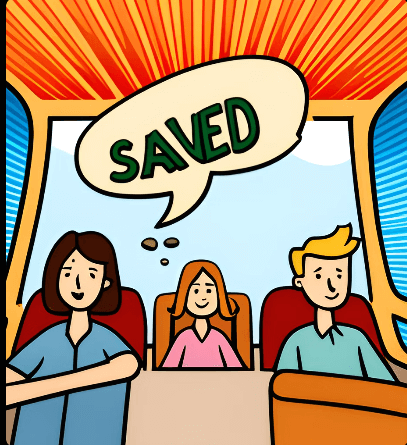
In addition to the cost-effectiveness of second-hand baby car seats, several other compelling benefits make them an attractive option for environmentally conscious parents. One significant advantage is their positive impact on the environment and sustainability efforts.
Opting for a second-hand baby car seat aligns with eco-friendly principles by reducing waste and extending the lifespan of a product. By choosing a pre-owned car seat, you actively participate in the circular economy, where items are reused and kept in circulation rather than discarded. It helps to minimize the demand for new car seat production and decreases the overall environmental footprint associated with manufacturing, packaging, and transportation.
When you purchase a second-hand baby car seat, you essentially give it a second life, maximizing its usefulness and minimizing the resources required to produce a new one. It contributes to conserving raw materials, energy, and water, all essential for manufacturing new car seats.
Additionally, the availability of trusted brands in the second-hand market is another environmental benefit. Reputable brands often have rigorous testing and safety standards, ensuring the car seats maintain their structural integrity and protective capabilities over time. By purchasing a high-quality second-hand car seat from a trusted brand, you can have confidence in its safety features and long-term durability, reducing the need for frequent replacements and further minimizing waste generation.
Choosing a second-hand baby car seat is a responsible choice that benefits your wallet and contributes to a more sustainable future. By embracing the circular economy and reducing waste, you actively participate in environmental conservation efforts while providing your child with a safe and secure travel solution.
Risks of Using Second-Hand Baby Car Seats
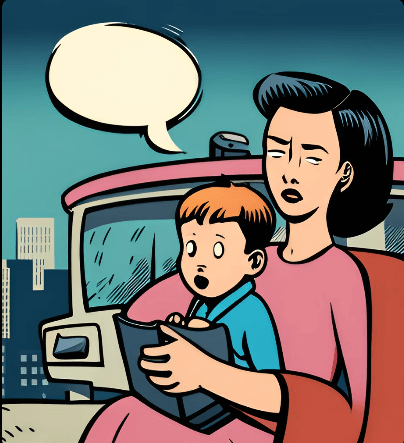
Unknown History: When purchasing a second-hand car seat, it may be challenging to determine its full history. Knowing the car seat’s usage, maintenance, or any potential accidents it has been involved in is necessary to ensure its safety.
Wear and Tear – Used Baby Car Seats
Second-hand car seats might exhibit signs of wear and tear, such as frayed straps, broken buckles, or worn-out padding. These factors can compromise the seat’s structural integrity and ability to protect your child in an accident. For instance, if the straps are frayed, they may not securely restrain your child during sudden stops or collisions, increasing the risk of injury.
Expired Car Seats – Expiration Dates on Baby Car Seats
Car seats have expiration dates for a reason. Over time, the materials in a car seat can degrade, reducing its effectiveness in providing adequate protection. Using an expired car seat increases the risk of injury to your child, as it may not withstand the forces exerted during a crash. For example, plastic components may become brittle, compromising their ability to absorb impact and distribute forces away from your child.
Recalls and Safety Updates – Child Safety and Second-Hand Car Seats
Second-hand car seats may not have received necessary recall repairs or safety updates. The previous owner might have been unaware of these recalls or failed to address them. As a result, the seat could still have potential safety issues that haven’t been resolved. For instance, there may be a defect in the seat’s design or a known issue that requires modification or replacement parts.
These drawbacks highlight the importance of thoroughly inspecting and researching second-hand car seats before purchasing them. It is of utmost importance to prioritize your child’s safety and remain vigilant about the potential risks that may arise from wear and tear, expired car seats, and the absence of recalls or safety updates. By taking proactive measures, such as thorough inspections and staying informed about recalls, you can mitigate these risks and ensure your child’s well-being during travel.
How to Choose a Safe Second-Hand Baby Car Seat?

Selecting the right car seat for your baby is one of the most critical safety decisions you’ll make as a parent. While new car seats offer the latest in safety features, second-hand options can be a cost-effective choice. However, ensuring the safety of a second-hand baby car seat requires careful consideration and diligence. In this comprehensive guide, we will lead you through the crucial aspects to keep in mind when selecting a secure second-hand baby car seat, equipping you with the information necessary to make a well-informed and safe decision for your cherished child.
The National Highway Traffic Safety Administration (NHTSA) also provides valuable recommendations when it comes to second-hand baby car seats.
They strongly advise parents and caregivers to exercise caution and adhere to the following guidelines:
Thorough Research and Background Check – Inspecting Used Car Seats for Damage or Wear
Before purchasing a second-hand car seat, conducting thorough research and performing a background check on the seat is essential. Check the seat’s history, including any reported accidents or incidents, to ensure it hasn’t been involved in a significant crash that may have compromised its safety. Additionally, research the model and brand of the car seat to gather information about its safety record, any associated recalls or concerns, and the availability of replacement parts or user manuals.
Checking for Recalls and Safety Notices – Used Car Seats
One of the most important steps in choosing a safe second-hand car seat is checking for recalls and safety notices. Visit the manufacturers or relevant government websites to determine if the car seat model has any outstanding recalls or safety concerns. This information is crucial as it ensures you know and can appropriately address any potential issues.
Check Expiration Date – Second-Hand Baby Car Seat
Verify the expiration date on the car seat. Avoid purchasing or using a seat that has expired or is nearing its expiration date.
Inspecting the Car Seat – Safety Risks of Second-Hand Car Seats
Before finalizing your decision, thoroughly inspect the second-hand car seat for any visible damage or signs of wear and tear. Check the integrity of the seat’s structure, including the frame, harness, and buckles. Ensure all parts are intact, functioning properly, and not subjected to significant wear. Also, please verify that the seat has not expired, as car seats typically have an expiration date, after which their safety and effectiveness may be compromised.
Purchase from Trusted Sources
verifiable history of reliable car seat usage. Avoid purchasing car seats from unknown or unverified sellers, as obtaining accurate information about the seat’s history, recalls, or safety concerns may be difficult.
Ensure Proper Installation – Second-Hand Baby Car Seats
Whether the car seat is new or second-hand, ensure it is correctly installed according to the manufacturer’s instructions and safety guidelines. This step is crucial to maximize the car seat’s effectiveness in protecting your child.
Recommendation for the Choice Between New and Second-Hand Seat
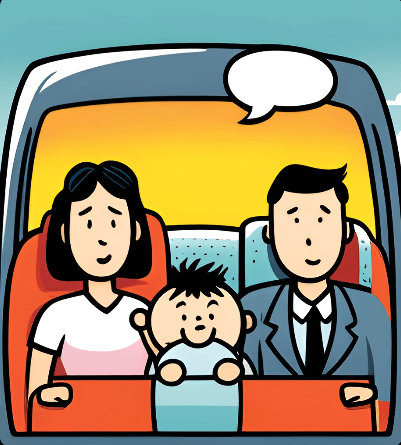
When evaluating the decision between a new baby car seat and a second-hand baby car seat, It is decisive to conduct a thorough evaluation and assessment of the benefits and possible drawbacks before deciding. A new baby car seat offers several advantages, such as adherence to the latest safety standards, enhanced crash protection, and a pristine condition that ensures optimal performance. Nevertheless, the new baby car seat option often comes with a higher cost and may need more availability, presenting potential obstacles for families with budget constraints.
On the other hand, a second-hand baby car seat provides cost savings and the opportunity to access high-quality brands that might otherwise be unaffordable. It aligns with environmental considerations by reducing waste and extending the lifespan of a product. However, it carries risks associated with an unknown history, wear and tear, potential expiration, and the lack of recalls or safety updates.
Conclusion
This guide explores the benefits, risks, guidelines, and a detailed comparison between new and second-hand baby car seats. Both options have their advantages and considerations.
While second-hand baby car seats offer cost savings and environmental benefits, it is crucial to approach their selection and usage with caution. Thorough research, careful inspection, and adherence to safety guidelines are essential to minimize potential risks associated with second-hand car seats.
When deciding between a new car seat and a second-hand car seat, it is of utmost importance to prioritize your child’s safety and be aware of the potential risks associated with wear and tear, expired car seats, and the lack of recalls or safety updates. Your child’s safety should never be compromised.
Remember, your child relies on you for a safe and secure travel solution. You can make an informed decision that prioritizes your child’s well-being by thoroughly evaluating the advantages and potential drawbacks, conducting thorough research, inspecting the car seat, and ensuring proper installation.
Choosing a new baby car seat offers assurance of quality, compliance with safety regulations, and the availability of warranties and support. However, if you choose a second-hand baby car seat, take the necessary precautions, such as researching the seat’s history, checking for recalls and safety updates, inspecting for wear and tear, and purchasing from trusted sources.
Whether you opt for a new or second-hand baby car seat, always remember that your child’s safety should be the guiding factor in your decision. Invest the time and effort to make informed choices prioritizing their protection during travel.
When deciding on baby car seats, we encourage you to prioritize your child’s safety and well-being. Take the necessary steps to evaluate the options thoroughly, consider the risks and benefits, and make a choice that aligns with your budget and environmental concerns without compromising safety. You can provide your child with the utmost protection and peace of mind during every journey.
Make an informed decision based on thorough research, careful inspection, and adherence to safety guidelines. Consider the long-term investment in your child’s well-being and explore assistance programs or affordable options.
By understanding the potential risks, being informed about safety measures, and making educated decisions, parents can make the best choice for their child’s safety when considering new or second-hand baby car seats.
Now, it’s time for you to take action. Evaluate your specific needs, consider the risks and benefits discussed in this guide, and make a decision that aligns with your budget and environmental concerns and, most importantly, ensures your child’s safety.
Frequently Asked Questions – Used Baby Car Seats
Can I find replacement parts or user manuals for a second-hand baby car seat?
Finding replacement parts or user manuals for a second-hand baby car seat is possible. However, availability may vary depending on the brand, model, and age of the car seat. For easy access to replacement parts and user manuals for a second-hand baby car seat, it is recommended to contact the manufacturer directly or visit their official website. They can guide how to obtain the necessary components or documentation to ensure the proper functioning and safety of the second-hand baby car seat.
How do I check for recalls or safety notices for a second-hand baby car seat?
To check for recalls or safety notices for a second-hand baby car seat, visit the manufacturer or relevant government websites. Enter the model and serial number of the car seat to determine if there are any outstanding recalls or safety concerns. This information ensures that you stay informed about potential issues and can take appropriate action to address them, prioritizing your child’s safety.
Can I trust the safety of a second-hand baby car seat from an online marketplace?
The safety of a second-hand baby car seat from an online marketplace depends on various factors. It’s important to exercise caution and thoroughly research the seller’s reputation, check for product details, ask for information on the seat’s history, and inspect the seat for any visible damage or signs of wear and tear. Additionally, verify if the seat has been involved in any recalls or safety concerns. By taking these precautions, you can make a more informed decision and potentially find a safe second-hand car seat.
How do I clean and sanitize a second-hand baby car seat?
Cleaning and sanitizing a second-hand baby car seat is crucial to maintain hygiene and ensure your child’s well-being. Start by carefully removing the seat cover and following the manufacturer’s instructions for cleaning. Use mild soap and water to clean the seat cover, harness straps, and other removable parts. Avoid using harsh chemicals or bleach that may damage the materials. For sanitizing, wipe down hard surfaces with a gentle disinfectant suitable for baby products. Ensure that all components are fully dry before reassembling the car seat.
How do I ensure the proper fit of a second-hand baby car seat for different car models?
Properly fitting a second-hand baby car seat in different car models requires careful consideration. Start by thoroughly reading the car seat and vehicle owner’s manuals to understand the installation requirements. Follow the manufacturer’s instructions for proper installation, including using the appropriate installation method (e.g., LATCH system or seat belt) and adjusting the seat to fit securely in the vehicle. If needed, consult with a certified child passenger safety technician to ensure the correct installation and fit of the car seat in your vehicle model.
